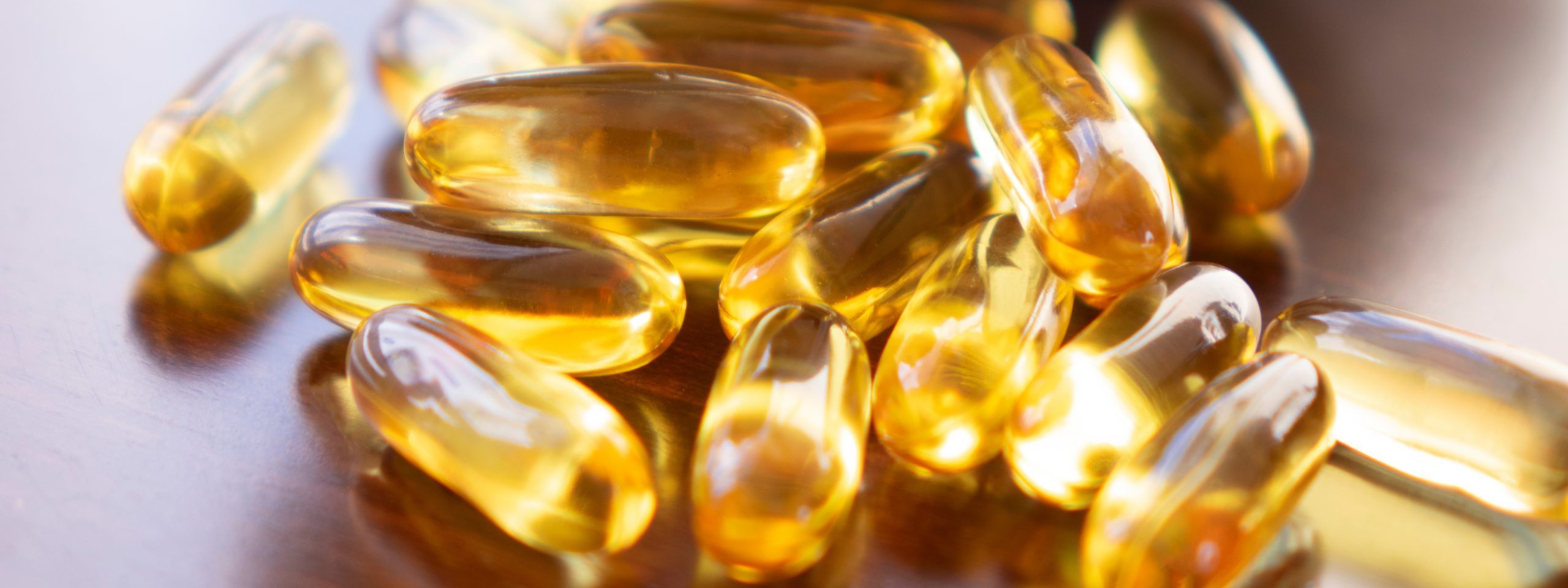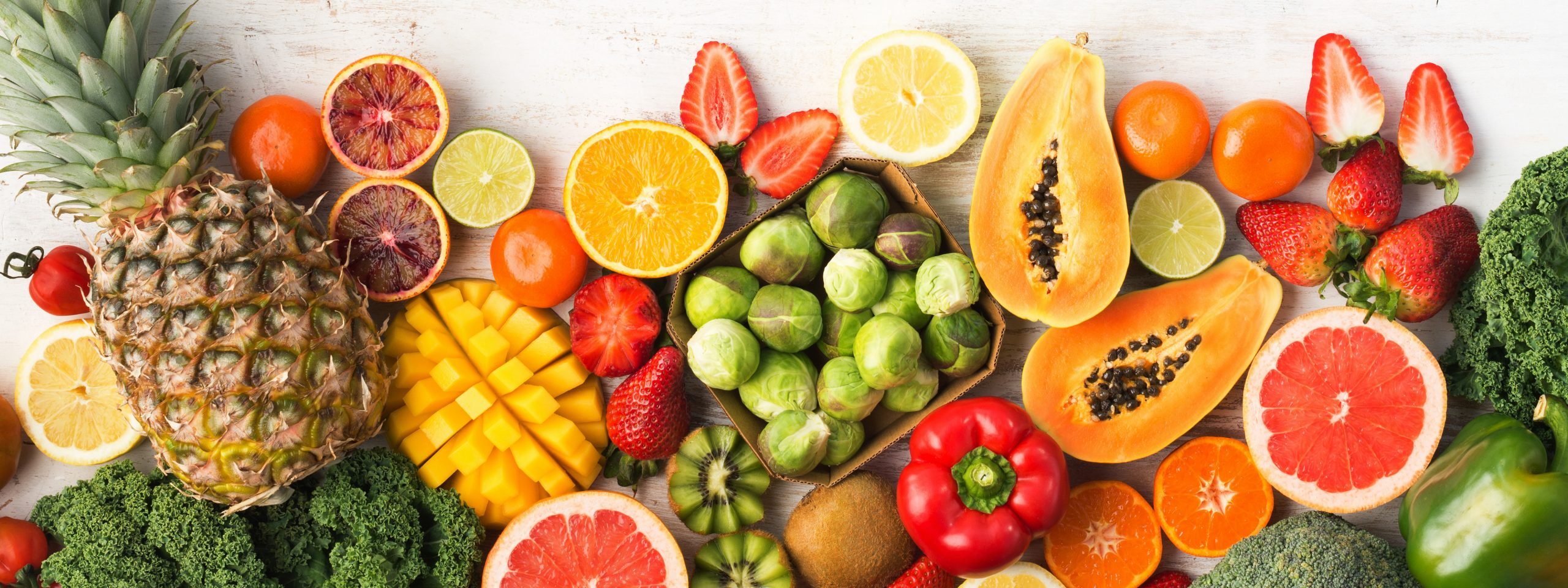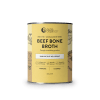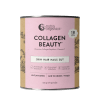What to Eat for Healthy Skin
How Hay Fever Can Cause Itchy Rashy Skin and What You Can Do About It
Spring is my favourite time of year!
The fruit trees blossom, daffodils come up, baby animals abound…
…and everything feels fresh and new.
Spring is also prime hay fever season.
Sneezing, runny noses, watering eyes, puffy faces and in some lucky cases itchy, rash skin
A surprising number of us suffer with hay fever at this time of year…
Especially those of us who live in Melbourne – one of the hay fever capitals of the world!
What is Hay Fever?
Hay fever symptoms are an immune response to allergens
In seasonal hay fever, the reaction is generally to pollens.
(especially wind-born pollens from grasses, weeds and trees)
Moulds, animal fur and house dust can also drive hay fever symptoms.
Hay fever is our bodies immune response to what it thinks are ‘threats’.
This response leads to the symptoms of runny nose, itch eyes and itchy skin.
Why do I get itchy, rashy skin with hay fever?
Part of our bodies immune response is for certain immune cells to release histamine to help ‘combat the threat’
Increased histamine can be a driver for itchy, rashy skin.
For some people, part of the immune response includes an increase in skin sensitivity.
This can lead to inflamed skin, itchy skin and the flare up of other inflammatory skin conditions – like eczema
And those with a genetic tendency towards inflammatory conditions – like asthma or eczema –
…are also likely to have a tendency towards allergic conditions like hay fever.
Histamine… is that why Antihistamines work?
I like to think of it like our body has a ‘histamine bucket’
Histamine is super important for so many essential functions in the body.
So in the bottom of the bucket we start with essential histamine…
(that’s histamine needed for digestion, brain function and the immune system)
…that essential histamine is always in the bucket.
But, if we have an allergy, our bodies immune response releases more histamine… so this is also added to the bucket.
Plus, if we eat a higher histamine diet, then this histamine is also added to the bucket.
(we’ll talk about higher histamine foods below)
If our bodies are making or eating more histamines than they break down, then the ‘histamine bucket’ overflows…
…and that’s when we’ll notice histamine sensitivity symptoms. Like itching, rashes, headaches and diarrhoea
We don’t need to remove all histamines from this bucket.
We just need to prevent it from overflowing and causing symptoms.
Yes, anti histamines and steroids can help reduce hay fever and histamine symptoms in the short term…
…but this doesn’t get to the root cause of the symptoms.
So the cycle of the overflowing histamine bucket continues.
Nutrient support, modulating the immune system, supporting the gut and reducing inflammatory foods can help manage this histamine cycle.
So we’ve got for you 5 natural ways to help with the ‘over flowing histamine bucket’, reduce inflammation and in turn reduce hay fever symptoms…
#1. LOOK TO ANY FOODS THAT MIGHT BE TRIGGERING SYMPTOMS

Food sensitivities can both trigger hay fever symptoms and make hay fever symptoms worse…
Some common trigger foods for hay fever sufferers are:
dairy, sugar, chocolate and high histamine foods
To reduce hay fever symptoms, it’s important to:
- Identify your specific trigger foods and other allergens, and
- Reduce your exposure to them (like wearing a face covering outside or not sitting in the grass)
Why are some foods unhelpful for hayfever?
- If we eat any food we have a sensitivity to, this will increase inflammation in the gut and histamines in the body
- One way to reduce the histamine level in our ‘bucket’ is to cut down on eating higher histamine foods. Aged or fermented foods have higher levels of histamines. As well as food that has spoiled or has higher levels of bacteria
- Think: Leftovers, aged cheeses, sauerkraut, deli foods or even things like canned tuna. The older a food is, generally the higher the histamine content
- Dairy: Another potential food trigger for some people is dairy. Many adults are lactose intolerant and if they continue to eat dairy, this can lead to inflammation
- Dairy is also seen as a mucus forming food, which can make hayfever symptoms like a runny nose and sinus congestion worse
Try:
- Keeping a food journal or diary of what you’re eating and how your hay fever symptoms change over time
- Moving towards eating more anti inflammatory foods and supporting your gut health
- Please seek advice from a health practitioner before removing any particular food group
#2. SUPPORT YOUR GUT

With a large percentage of our immune system housed in our gut… supporting our gut health and dealing with any underlying issues (like leaky gut) can go a long way to reducing hay fever symptoms.
It’s a good idea to work with a practitioner on this… as even some ‘good gut’ foods may be high in histamine and not the best for everyone in the initial stages of gut support.
Why is gut support helpful for hayfever symptoms?
- The enzymes that break down histamine are made and stored in the cells of the small intestine and colon (they are called DAO enzymes)
- These enzymes work on breaking down the histamine in the foods we eat. So less histamine enters the bloodstream
- But if we’re making less of this enzyme or it’s blocked from working… then the histamines in the food we eat, can enter the body and increase the amount of histamine in our ‘bucket’
- These histamine breaking enzymes can be affected by: high alcohol intake, some drugs (like antibiotics, antidepressants, pain medication, reflux medication), cola, energy drinks, drinking tea with meals, chronic stress, some nutritional deficiencies, inflammatory digestive conditions (IBD, crohns, dysbiosis, SIBO) and possible genetic variants
- There are also certain bacteria in the gut that can convert the histadine amino acid in food into histamine. This leads to a greater amount of histamine in the body. Which is why if you have an imbalance of certain bacteria in the gut, your body could be ‘creating’ more histamine
- The histamine converting bacteria can be ‘good’ gut bacteria, so these bacteria often in some probiotic supplements. Which means it’s important to get guidance if you think a ‘histamine bucket’ overflow is an issue
How can we support our gut?
When it comes to the immune system and avoiding particular food groups… it’s important to get proper advice for a diagnosis and treatment plan.
But to start with, try:
- Avoiding anything that puts an extra strain on your digestive system. Make sure you chew your food, eat in a relaxed environment (like eating at a table with the TV off) and avoid drinking fluids with a meal
- We also want to encourage gut bacteria diversity and we do this by eating a wide variety of foods every week. Think: 30 plus different whole foods (fruits, vegetables, nut, seeds, legumes)
If you’re looking for high quality pre-made bone broth, we like the Nutra Organics products.
Check out our Beef Bone Broth – Hearty, Beef Bone Broth – Turmeric and the FODMAP Friendly Bone Broth from Tonemade
For a ‘naked’ Collagen (nothing but collagen), check out our Collagen Hydrolysate
For a Gelatin (that gels), check out our Premium Beef Gelatin
For a Collagen with extra added nutrients (like Camu Camu for Vitamin C and greens), check out our Supergreens Collagen and our Nutra Organics Collagen Beauty
Go carefully with any of these gut support supplements as they do tick the boxes for ‘aged and fermented’
#3. INCREASE YOUR COLOURFUL FRUITS & VEGGIES

We’re talking about a rainbow of fruits and veggies here…
Why are colourful low-histamine foods helpful for hayfever symptoms?
- Colourful fruits and veggies contain bioflavonoids like quercetin, catechin, and hesperidin. These bioflavenoids can be helpful for reducing the impact of histamine in the body
- Quercetin is high in foods like onions, shallots, apples (with the skin on), grapes, berries, broccoli, green tea (or Matcha)
- Increasing the different types of fruits and vegetables we eat is the best way to encourage different microbes in our gut. And we know that microbiome diversity is key for gut health
It’s important to note that:
Some vegetables like: tomatoes, eggplants and spinach have naturally higher levels of histamine than other vegetables.
Also some fruits like: citrus, papaya, pineapples, plums, kiwi fruit and bananas can encourage the histamine release from immune cells (these are called ‘histamine liberators’)
Keep in mind that everyone has a different level of tolerance… and every person reacts to different foods differently.
So listen to your body and surround yourself with a team that can assist you in making sense of your symptoms.
Try:
- Challenging yourself to see how many different fruits and vegetables that you can eat in a week. Maybe try a food or a recipe that you haven’t tried before. This is great to try with the kids as well
- With every meal, ask yourself “what extra serving of fruit or vegetables can I add to this?”…
- Breakfast: add some berries on top of your cereal or chop up some purple cabbage and some kale and fry up with your eggs
- Snack: slice up some apples and add some nut butter on top, veggies sticks with a dip. And don’t forget that fruit is a great snack all on it’s own
- Lunch / Dinner: add an extra side salad to every meal, grate or chop up extra veggies
If you’re looking for a whole food bioflavonoid supplement, we’ve done the research for you and we like Matcha Maiden and Cell-Logic
Check out our Matcha Green Tea Powder and EnduraCell Broccoli Sprouts…
#4. UP YOUR OMEGA 3’s

Think ‘oily fish’, like salmon, mackerel, anchovy, sardines, herring.
These are the ideal source of omega 3’s. The smaller the fish, the less likely it is to have high levels of mercury.
Why are omega 3’s helpful for hayfever symptoms?
- Omega 3’s are anti-inflammatory. They can help block the inflammatory pathway, reducing hay fever symptoms
- Increasing our intake of omega 3’s from oily fish may help with the balance of ‘good’ and ‘bad’ bacteria in the gut
- Omega 3’s can also be helpful for boosting DAO enzyme levels
Try:
Thinking beyond the ‘fish fillet’ when you’re looking to increase your intake of fish or seafood… give these a go:
- Salmon and sweet potato patties
- Grilled fish tacos
- Sardines on GF toast or potato hash
Remember that ‘fresh is best’… tinned fish is likely to be higher in histamines than fresh fish. Go carefully with omega 3 supplements as results can be mixed when it comes to supplement purity and histamine sensitivity.
If you’re looking for high quality omega 3 fish oil and complete omega supplements to try, we’ve done the research for you and we like the Nordic Naturals Omega supplements.
Check out our Ultimate Omega, Omega-3 Liquid and Complete Omega…
#5. UP YOUR VITAMIN C INTAKE

We’re talking citrus fruits and colourful red, green, purple and orange foods in particular.
This is why it’s important to include a rainbow of fruits and vegetables in your meals every day.
Why is Vitamin C helpful for hayfever symptoms?
- Vitamin C is a natural antihistamine
- Vitamin C also plays an important role in our overall immune system
- If you’re getting your vitamin C intake from fruits and vegetables, you’ll also have the added benefit from quercetin intake
- Quercetin is a bioflavonoid that works with Vitamin C to reduce histamines, and inflammatory mediators
To get the best results with Vitamin C:
- It’s best to start increasing Vitamin C intake before the start of hay fever season
- Continue to take a maintenance dose throughout hay fever season
- Also taking smaller amounts throughout the day compared to a larger dose just once per day, will have better absorption and effectiveness
Try:
- A kiwi, zucchini, spinach and raspberry smoothie
- Berries on your cereal
- Lemon juice dressing on salads
- Dips with carrots, capsicum and cucumber sticks
If you’re looking for whole food Vitamin C supplement, we’ve done the research for you and we like the Eden Foods and Vitus whole foods range of supplements.
Check out our Wild C Truly Natural Vitamin C Powder and our Vitus Our Plant Sourced Vitamin C Powder
Other important nutrients to keep in mind for hay fever:
- Zinc: found in oysters, grass-fed meat, pumpkin seeds
- Vitamin D: found in oily fish, cod liver oil and created in the skin when exposed to sunlight
- Vitamin E: found in avocado, almonds, sesame seeds
- Vitamin A: found in liver, grass-fed ghee, cod liver oil
I hope this is helpful if you’re one of those who finds spring more challenging due to hay fever…
Wishing you silky smooth skin!









